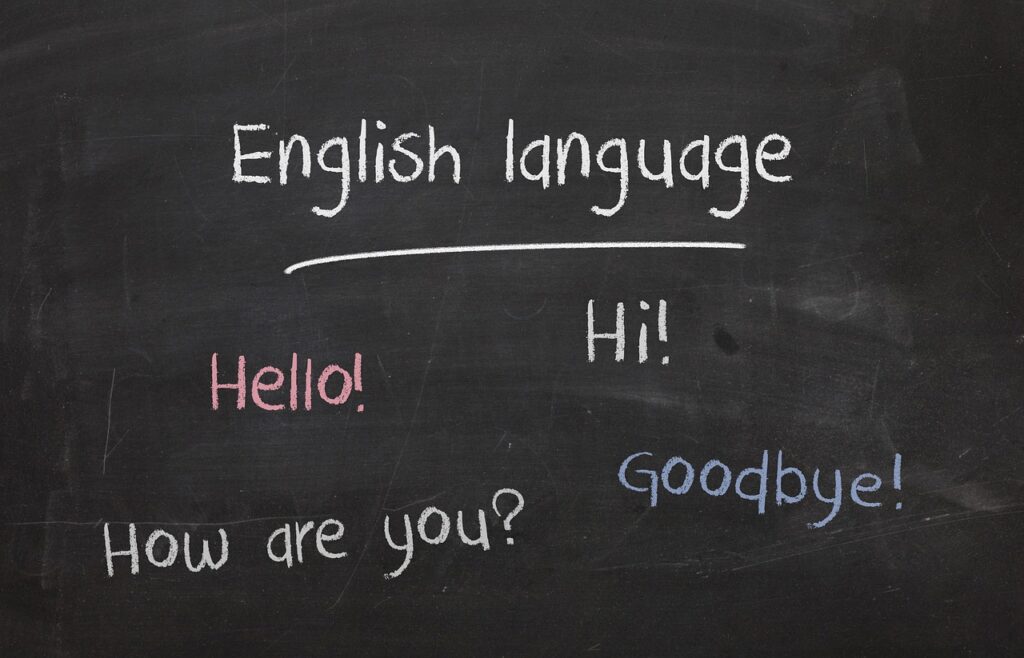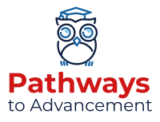Learning styles refer to the various ways individuals prefer to absorb, process, and retain information. Recognizing and understanding one’s learning style can significantly enhance the learning experience, allowing you to choose the learning format that matches how you learn. This blog aims to explore the different types of learning styles and provide guidance on tailoring education to align with these preferences.
Types of Learning Styles
Various learning styles cater to individual preferences and strengths, enabling learners to better understand, retain, and apply information. In this section, we will delve into the characteristics and strategies of each learning style to help you identify your preferences and maximize your educational experience.
Visual Learning Style
Visual learners excel when information is presented in a visual format, such as diagrams, charts, or images. To enhance learning, visual learners can use color-coding, mind maps, and flashcards to organize and remember information effectively.
- Recommended Learning Formats:
- Video-Based Learning: Includes recorded lectures, visual demonstrations, and educational videos that help visualize concepts.
- Infographic and Diagram-Based Learning: Online courses or modules that utilize infographics, flowcharts, and concept maps can help reinforce understanding.
- E-Learning with Visual Tools: Platforms like interactive simulations or virtual labs can help them see concepts in action.
Auditory Learning Style
Auditory learners thrive in environments where information is presented through spoken language. They may find it beneficial to attend in-person lectures, participate in group discussions, or listen to audiobooks and podcasts to absorb information more efficiently.
- Recommended Learning Formats:
- Lecture-Based Learning: Traditional or online lecture settings allow auditory learners to absorb information through listening.
- Podcast and Audio-Based Courses: Courses or modules that include podcasts or audio lectures are ideal for these learners.
- Discussion-Based Learning: Group discussions, webinars, or live class sessions with Q&A segments help reinforce content through verbal interaction.
Kinesthetic Learning Style
Kinesthetic learners prefer hands-on experiences and learn best by physically engaging with the subject matter. These learners can benefit from participating in activities, experiments, or role-playing exercises that connect them directly with the learning material.
- Recommended Learning Formats:
- Project-Based Learning: Courses or programs that include real-world projects or case studies allow kinesthetic learners to actively apply what they learn.
- Laboratory and Workshop-Based Learning: Fields that offer lab work (e.g., sciences or tech labs) or workshops are ideal for hands-on learning.
- Internships and Fieldwork: For these learners, programs that incorporate internships or fieldwork provide opportunities to apply skills in a real-world environment.
Reading/Writing Learning Style
Reading/writing learners excel when information is presented in written form, such as textbooks, articles, or online resources. To maximize their learning, they can take detailed notes, rewrite information in their own words, and use written summaries to reinforce their understanding.
- Recommended Learning Formats:
- Text-Based Online Learning: Courses that rely on textbooks, written assignments, and written resources can be effective for these learners.
- Self-Paced Online Modules: Learning modules that provide written content with quizzes and assessments allow reading/writing learners to process information at their own pace.
- Research and Essay Assignments: Programs that include research projects, essays, and analytical writing allow these learners to engage deeply with the material.
Intrapersonal (Independent) Learners
Intrapersonal learners excel in self-paced and independent learning environments, where they can work alone and set their own goals.
- Recommended Learning Formats:
- Self-Paced Online Courses: Programs that allow learners to progress at their own speed, especially asynchronous learning, are ideal.
- Independent Study Programs: These learners benefit from programs that allow them to focus on individual research or projects.
- Reflective and Goal-Setting Assignments: Assignments that involve personal reflection, goal setting, and self-assessment can help intrapersonal learners.
Logical/Analytical Learners
Logical or analytical learners have a strong affinity for reasoning, problem-solving, and understanding complex concepts. They can benefit from activities that challenge their critical thinking skills, such as puzzles, logical exercises, or working through hypothetical scenarios.
- Recommended Learning Formats:
- Problem-Based Learning: Scenarios or case studies that involve problem-solving are highly effective, as they allow logical learners to analyze and think critically.
- Data-Driven and Quantitative Courses: Subjects like mathematics, programming, and analytics are a great fit, as they involve logical problem-solving.
- STEM and Research-Intensive Programs: Courses in science, technology, engineering, and math cater well to analytical learners, especially those that incorporate experimental or research-based learning.
Social/Linguistic Learners
Social or linguistic learners enjoy learning in group settings and benefit from interacting with others. Strategies for these learners include participating in study groups, engaging in debates, and seeking feedback from peers or instructors.
- Recommended Learning Formats:
- Lecture and Discussion-Based Learning: Courses with ample opportunities for discussions, presentations, and debates allow verbal learners to express ideas.
- Text-Heavy Modules with Interactive Reading Assignments: Programs that include interactive reading, such as annotated texts or literature discussions, cater well to verbal learners.
- Essay and Presentation-Based Assignments: Projects that involve writing essays or presenting research findings allow these learners to engage deeply with language.
Nature Learners
Nature learners are drawn to learning experiences that involve the natural world. They can benefit from outdoor activities, field trips, or incorporating environmental themes into their studies to connect with their learning preferences.
- Recommended Learning Formats:
- Fieldwork and Environmental Studies: Programs that include field studies, ecology labs, or environmental science cater well to naturalistic learners.
- Experiential Learning with Outdoor Components: Subjects like biology, geology, or environmental science that incorporate outdoor experiments and observations work well.
- Service-Learning in Nature-Focused Programs: Community service or projects related to sustainability or conservation provide meaningful applications of learning.

How to Determine Your Learning Style
Understanding your learning style is essential for maximizing your educational experience. To identify your preferred learning style, consider the following steps:
Assess Preferences and Strengths
Reflect on the methods that have worked best for you in the past. Think about the activities and environments that make you feel comfortable and engaged when learning. This self-assessment can provide insights into your preferred learning style.
Learn and Observe
Experiment with various learning techniques and strategies to see which ones resonate with you. Pay close attention to how well you retain and apply information when using these methods, as this will help determine their effectiveness for your learning style.
Seek Guidance
Don’t hesitate to consult with educators, academic advisors, or career counselors who can help you better understand your learning preferences and offer tailored advice. Their expertise and experience can provide valuable insights into your learning style and how to optimize it for success in your educational journey.

Additional Resources for Learners with Different Learning Styles
In addition to selecting courses and programs that align with individual learning styles, it’s essential to explore other resources that support diverse learning preferences. These resources can enhance the educational experience and contribute to personal growth and success.
Career and education blogs offer valuable insights, tips, and advice for learners of all styles. These blogs often cover a wide range of topics, from study strategies and learning techniques to career development and industry trends. By regularly reading and engaging with career and education blogs, individuals can stay informed and up-to-date on the latest developments in their field, as well as discover new ways to optimize their learning experience.
Financial guides and strategies for paying for education can also be immensely beneficial for learners, as they provide valuable advice on managing tuition costs, finding scholarships and grants, and navigating the financial aid process. By utilizing these resources, students can make informed financial decisions and minimize the financial burden of their education.
Online learning platforms and courses offer additional opportunities for learners to pursue their education in a format that suits their unique learning style. These platforms provide a diverse range of courses and online programs, often featuring multimedia content, interactive elements, and self-paced learning options. By exploring online learning platforms, individuals can tailor their educational experience to their learning preferences, ensuring a more engaging and effective learning experience.
By embracing the diverse learning styles and preferences of students, education providers can create inclusive and supportive learning environments. By utilizing a variety of resources, including career and education blogs, financial guides, and online learning platforms, learners can optimize their educational experience and achieve their goals.
Learning Style Quiz
The following learning style quiz can help guide you toward identifying the learning style that you’ll most likely benefit from. We’ve only included the three most common styles: Auditory, Visualization, and Kinesthetics.
Remember, these categories are generalizations, and individuals may have a mix of learning styles. Use this quiz as a starting point to understand your preferences and adjust your study habits accordingly. Keep in mind that everyone may have a combination of learning styles, but one style might be more dominant for you.
Quiz
1. When trying to understand a new concept, I prefer to:
- Read about it in a book or written materials.
- Listen to a lecture, podcast, or discussion about it.
- Watch a demonstration or video explaining the concept.
2. When studying for a test, I find that I remember information best when:
- I write out notes and key points.
- I discuss the material with classmates or a study group.
- I create visual aids like diagrams, charts, or mind maps.
3. In a group project, I am most likely to:
- Take responsibility for researching and organizing information.
- Participate actively in discussions and contribute ideas.
- Work on visual aspects like presentations or design.
4. When faced with a problem, I usually:
- Analyze the situation and think about possible solutions.
- Talk through the problem with someone to gain different perspectives.
- Sketch or visualize possible solutions.
5. If you had to learn a new skill (e.g., cooking, playing an instrument), you would prefer to:
- Follow written instructions or a manual.
- Have someone show you how to do it first.
- Watch online videos or tutorials.
6. When recalling information, I am most likely to remember:
- Facts and details.
- Conversations and discussions.
- Images and visual cues.
7. In a classroom setting, I learn best when the teacher:
- Provides clear written instructions and materials.
- Engages the class in discussions and interactive activities.
- Uses visual aids, diagrams, or presentations.
8. When you have free time, you are most likely to:
- Read a book, article, or blog post.
- Listen to a podcast, audiobook, or music.
- Engage in visual activities like drawing, painting, or watching videos.
Scoring:
- For each ‘1 response, give yourself 1 point.
- For each ‘2’ response, give yourself 2 points.
- For each ‘3’ response, give yourself 3 points.
Results:
- 8-14 points: Visual Learner
- 15-22 points: Auditory Learner
- 23-24 points: Kinesthetic/Tactile Learner
Discover Your Path Today
Take the first step towards optimizing your education experience by exploring Pathways to Advancement. Discover tailored education and career resources that cater to your unique learning style. For personalized guidance on planning your education based on your learning preferences, contact Pathways to Advancement today. Empower yourself to reach your full potential and achieve your education and career goals with Pathways to Advancement.



